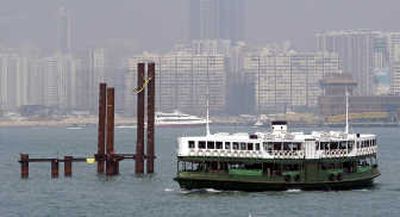Hong Kong weighs change, but at what cost?

HONG KONG – For more than 100 years, this city has continually razed and rebuilt itself, evolving from trading post to industrial hub to global financial center. But the impulse toward redevelopment here is facing increasingly urgent challenges from residents hoping to save the few tangible remains of the city’s rich history.
Plans to redevelop a sprawling old police and prison complex in the heart of Hong Kong has touched off the latest historical preservation debate. The landmark is pitting some of the most powerful interests here against residents, including one of the city’s oldest families.
In Hong Kong, where land for construction is scarce and commerce has long ruled, preservation has usually given way to a tide of urban development. Few of the British expatriates and Chinese immigrants who came to the city with the moniker “borrowed place, borrowed time” saw it as a permanent home. But since the territory was returned to Chinese rule from Britain in 1997, its local identity has come to the forefront and heritage conservation has taken on the overtones of a populist struggle.
Recently battles have been waged over buildings that in most cities would have little historical appeal. In the past year, the demolition of two 1950s ferry terminals to make way for a highway and commercial property developments spurred demonstrations, hunger strikes and arrests.
“These recent heritage battles represent a desperate search for a cultural anchor,” says Lee Ho Yin, director of the architectural conservation program at the University of Hong Kong. “It’s part of Hong Kong people seeking their own identity and roots.”
The Central Police Station and Victoria Prison, built from the 1860s to the 1930s, were part of the British colony’s attempts at imposing law and order on a population that included pirates and triads, criminal secret societies. The walled compound was a one-stop shop for the colonial penal authority, housing a police station, a prison, barracks for single officers, a courthouse and, until 1894, an execution grounds.
Since the police department moved to new headquarters in 2004, these buildings and spacious courtyards, covering about five acres in a prime location near the city’s Central business district, have mostly lain empty, closed to the public except during art exhibits or tours arranged a few times a year. The maze of former prison buildings is still ringed by coils of barbed wire.
The Hong Kong government planned to put the site up for public auction. But in 2004, five philanthropic families, led by the wealthy Hotung family, submitted a plan to conserve and redevelop the existing buildings into a visual-arts academy, to be run in collaboration with the University of Hong Kong. They offered $64 million to refurbish and maintain the site on the condition that the government accept a symbolic 1 Hong Kong dollar for a 50-year lease.
The government passed on the offer, sparking an outcry from conservation groups, architects and residents. For years the land remained in limbo, until October, when the Hong Kong Jockey Club, a nonprofit organization that holds a monopoly on Hong Kong’s legal betting market, stepped in with a $230 million proposal that would be funded by the club’s charitable trust.
It proposed preserving most of the existing buildings but also added a new element — a jagged 500-foot glass tower designed by Herzog & de Meuron, the Swiss Pritzker Prize-winning architects responsible for the “bird’s nest” Olympic stadium in Beijing and London’s Tate Modern Museum. The Jockey Club would put up costs of capital improvement and manage the operation, while the land and buildings would stay under government ownership. The government accepted the plan in principle, once again stoking opposition.
“In Hong Kong we already have a lot of that kind of building. It’s a bit ugly. I think they should maintain the site as it is and just renovate the existing buildings to make them look better,” says Mary Angela Tam, an owner of Great Wall Leather Goods Co., a small luggage store behind the police station compound.
“I don’t think it is appropriate for the neighborhood,” says Thomas Schmidt, managing director of the Hong Kong firm Sepia Design Consultants, who won a 2005 competition sponsored by architect and conservancy groups seeking ideas for the redevelopment of the complex.
Aside from practical concerns about increased traffic congestion and blocked views, any redevelopment will have to contend with the site’s “collective memory” — a loosely defined term that has become the battle cry of the recent preservation struggles, invoked over projects from the doomed piers on the waterfront, to the partial demolition of a 1937 Chinese mansion, to plans to tear down old shops and street markets.
Activists feel local residents have been ignored. “Community engagement should have happened before they went to the drawing board, but what has happened now is totally the opposite, and the design is quite shocking,” says lawyer Helena Yuen.
Hong Kong’s government recently acknowledged the public demand for greater preservation of the city’s historic buildings, in July creating a Development Bureau that will include a heritage commissioner.